This article was medically reviewed by Luba Lee, FNP-BC, MS. Luba Lee, FNP-BC is a Board-Certified Family Nurse Practitioner (FNP) and educator in Tennessee with over a decade of clinical experience. Luba has certifications in Pediatric Advanced Life Support (PALS), Emergency Medicine, Advanced Cardiac Life Support (ACLS), Team Building, and Critical Care Nursing. She received her Master of Science in Nursing (MSN) from the University of Tennessee in 2006.
There are 12 references cited in this article, which can be found at the bottom of the page.
This article has been viewed 59,563 times.
Before you start walking with a sprained ankle, make sure you get your doctor’s permission so you don’t cause any more damage. Ideally, you should only walk on a sprain that’s mild, and you should periodically strengthen your ankle through exercise so it gets stronger as you go. If you ever feel any pain, stop immediately and see your doctor for medical help.
Steps
Walking Tips
-
1Apply ice to your ankle as soon as you can after you sprain it. As soon as you can, rest your ankle and put an ice pack on it to decrease the swelling. Keep the ice on your ankle for 10-15 minutes at a time 2-3 times per day to help alleviate some of the pain. As you start to feel more comfortable, ice your ankle only once or twice a day, or whenever it feels swollen.[1]
-
2Take an anti-inflammatory medication to relieve pain and swelling. Opt for ibuprofen or naproxen, and take the recommended dose for your age as it is written on the packaging. However, if you haven’t seen a doctor yet, do that as soon as possible, since your doctor may prescribe a higher dose or more specific medication.[2]
- A typical over-the-counter dose of ibuprofen for an adult is 400 mg, three times per day. A doctor may prescribe a much higher dose depending on the severity of your injury and your size.
- The doctor may also prescribe narcotic pain relievers for you if the pain is severe. Always check with your pharmacist or doctor before taking any medication in addition to a prescription. Side effects may include constipation, drowsiness, and addiction if taken for too long a period.
- Acetaminophen can reduce pain, but does not reduce swelling.
Advertisement -
3Protect your ankle with a compression bandage, brace, splint, or high-top shoes. If the sprain is severe, the doctor will prescribe a walking boot or a splint for you. If not, try to wrap a compression bandage or brace around your ankle for 1-3 weeks. Wear boots or high-top shoes that can be laced up tight around your ankles for added support.[3]
- Wearing high heels with a sprained ankle could lead to further injury. If you have to wear dress shoes, choose flats over heels.
- In addition to using compression bandages, be sure to rest, ice, and elevate your ankle to help alleviate the pain.
-
4Check your surroundings for uneven ground or stairs before walking around. Be aware of where you are going to be walking so that you are not caught off-guard by loose rocks or potholes in a path or sidewalk. If your path looks rough or rocky, try to find a smoother alternative route, or ask a friend for help. Remember your ankle's now very tender, weak, and painful, so take good care of it to not cause further injury.
-
5Walk slowly and take small steps. Look out for spills, things on your path that you can trip over, or anything else in your way that might cause further injury. If you try to walk too quickly, you might miss potential hazards in your way.
- Concentrating on your walking will help you to not only stay safe and prevent injury but will also make you very aware of your pain level and your healing progress.
- Whenever possible, hold on to railings or ask a friend if you can lean on them for added support.
-
6Pause when needed and shift your weight to your uninjured foot. Listen to your body. If the pain is too intense to keep going, take a break and relieve your injured ankle of pressure by shifting your body’s weight to the other foot.[4]
- Some pain is unavoidable, but if you cannot maintain a conversation or lose breath as you walk because of the pain, then you should pause and rest.
Ankle-Strengthening Tips
-
1Stretch the ligaments in your ankle with an exercise band or rolled towel. To do this exercise, wrap a resistance band or a large rolled-up towel around the ball of your injured foot and straighten your leg. Then, point your toes up, down, left, and right. For best results, repeat the cycle of motions 10 times and do the exercise 3 times per day.[5]
- You do not need to wear shoes or supportive braces for this exercise.
-
2Balance yourself on your injured ankle to increase your stability. Make sure you’re standing on a hard, flat surface before you stand on your injured foot. Try not to hold on to anything as you balance, but make sure there’s a railing or wall nearby so you can catch yourself if you need to. As you work to maintain your balance, your ankle will shift back and forth, stretching out and strengthening the ligaments and muscles.[6]
- You should wear shoes for this exercise to give your foot some traction and prevent a fall.
- Make this exercise more challenging by using a balance board instead of a flat surface.[7] The tipping motion of the board will force your ankle to act against the movements, increasing its strength and stability.[8]
-
3Draw the alphabet on the floor using your injured foot. Sit in a comfortable chair with both feet resting flat on the floor. Then, with your injured foot, use your big toe to slowly trace the entire alphabet on the floor, one letter at a time. Drawing letters encourages ankle movement in every direction.[9]
- Repeat up to three times for maximum stretching and strengthening.
- You do not need to wear shoes for this exercise since you are sitting and do not need the extra support or traction.
- If you cannot reach the floor, you can draw the letters in the air for a similar result.[10]
-
4Swing your knees from side to side to stretch and strengthen your ankle. As you sit in a comfortable chair with your feet flat on the floor, slowly swing your knees as far as you can from side to side. Keep your foot pressed flat to the floor and continue for 3 minutes.[11]
- If you want to wear shoes while doing this exercise, opt for low-profile shoes that will not limit your ankle’s range of motion.
Injury Prevention Tips
-
1Rest your sprained ankle after walking to give it some time to heal. By exercising and walking on your sprained ankle, you will be putting a lot of strain on the ligaments. Give them a break by taking the pressure off of them for at least an hour after walking, giving them time to rest and heal.
-
2Ice your ankle to relieve pain and swelling. After walking on your injured ankle, it will probably be swollen and painful because of the stress it was under. Elevate your foot and hold a cold ice pack wrapped in a towel on your ankle for 10-20 minutes.
- If your ankle is really swollen, you can reapply the ice again after 10 minutes and continue the cycle of 10-20 minutes on, 10 minutes off, until the swelling goes down.
- A great substitute for an ice pack is a frozen bag of peas because it is cold and easily molds to the body part that you are icing.
- Wrapping the ice pack in a towel is important because you can damage your skin by applying ice directly to it.
-
3Compress your ankle using an elastic sports bandage. Wrap your foot from the base of your toes to about 3 inches (7.6 cm) above your ankle. Provide extra support by crisscrossing the bandage from left to right in a figure-eight motion around your ankle and heel. Secure it into place with metal fasteners or tape.[12]
- You want the compression bandage tight enough to give gentle pressure, but not so tight that restricts blood flow. If you have any tingling or discoloration in your toes, remove the bandage and rewrap it looser.[13]
- It’s not a good idea to sleep with a compression bandage on because it may reduce blood flow.[14]
-
4Elevate your ankle to speed up healing by reducing swelling. When you are sitting or laying down, keep your ankle elevated to reduce swelling by allowing fluid to drain from the injured area. If possible, lay down and keep your ankle elevated above your heart.[15]
Expert Q&A
Did you know you can get expert answers for this article?
Unlock expert answers by supporting wikiHow
-
QuestionHow can I keep pressure off of my ankles?
 Neal Blitz, DPM, FACFASDr. Neal Blitz is a Podiatrist and Foot & Ankle Surgeon who runs private practices in New York City and in Beverly Hills, California. Dr. Blitz is “The Bunion King®” and is the creator of the Bunionplasty® Procedure (plastic surgery for bunions) which has revolutionized bunion surgery. He has over 17 years of podiatric experience and specializes in minimally invasive foot and ankle surgery. Dr. Blitz received his DPM from the New York College of Podiatric Medicine, then completed a residency focused on Elective & Reconstructive Foot & Ankle Surgery at the Swedish Medical Center, and was awarded an AO Trauma fellowship in Dresden, Germany, focused on trauma and reconstructive techniques. He is board certified in Foot Surgery and Reconstructive Rearfoot & Ankle Surgery and is also a Diplomate of the American Board of Foot & Ankle Surgery and a fellow of the American College of Foot & Ankle Surgeons (FACFAS).
Neal Blitz, DPM, FACFASDr. Neal Blitz is a Podiatrist and Foot & Ankle Surgeon who runs private practices in New York City and in Beverly Hills, California. Dr. Blitz is “The Bunion King®” and is the creator of the Bunionplasty® Procedure (plastic surgery for bunions) which has revolutionized bunion surgery. He has over 17 years of podiatric experience and specializes in minimally invasive foot and ankle surgery. Dr. Blitz received his DPM from the New York College of Podiatric Medicine, then completed a residency focused on Elective & Reconstructive Foot & Ankle Surgery at the Swedish Medical Center, and was awarded an AO Trauma fellowship in Dresden, Germany, focused on trauma and reconstructive techniques. He is board certified in Foot Surgery and Reconstructive Rearfoot & Ankle Surgery and is also a Diplomate of the American Board of Foot & Ankle Surgery and a fellow of the American College of Foot & Ankle Surgeons (FACFAS).
Board Certified Podiatrist
-
QuestionHow do I walk comfortably if none of this is working?
 Luba Lee, FNP-BC, MSLuba Lee, FNP-BC is a Board-Certified Family Nurse Practitioner (FNP) and educator in Tennessee with over a decade of clinical experience. Luba has certifications in Pediatric Advanced Life Support (PALS), Emergency Medicine, Advanced Cardiac Life Support (ACLS), Team Building, and Critical Care Nursing. She received her Master of Science in Nursing (MSN) from the University of Tennessee in 2006.
Luba Lee, FNP-BC, MSLuba Lee, FNP-BC is a Board-Certified Family Nurse Practitioner (FNP) and educator in Tennessee with over a decade of clinical experience. Luba has certifications in Pediatric Advanced Life Support (PALS), Emergency Medicine, Advanced Cardiac Life Support (ACLS), Team Building, and Critical Care Nursing. She received her Master of Science in Nursing (MSN) from the University of Tennessee in 2006.
Board-Certified Family Nurse Practitioner In case of a mild sprain, it is recommended to use a crutch for partial weight-bearing and gradually return to normal activities over 2-4 weeks. If your injury is more severe, an orthopedic surgeon evaluation may be necessary. For those with severe sprains, treatment consists of immobilization with a rigid ankle splint or below the knee cast and no weight-bearing for 2-3 weeks, followed by progressive return to weight -bearing.
In case of a mild sprain, it is recommended to use a crutch for partial weight-bearing and gradually return to normal activities over 2-4 weeks. If your injury is more severe, an orthopedic surgeon evaluation may be necessary. For those with severe sprains, treatment consists of immobilization with a rigid ankle splint or below the knee cast and no weight-bearing for 2-3 weeks, followed by progressive return to weight -bearing.
Warnings
- You should only try these exercises and steps with a grade 1 sprained ankle. Grade 1 sprains are common sprains in which a ligament is stretched, but not torn. If you are in a lot of pain or your ankle is very unstable when you try to stand on it, see a doctor before trying home treatments.[16]⧼thumbs_response⧽
- Taking over-the-counter anti-inflammatories can cause liver damage or other health complications if used for a prolonged period of time. See your doctor for advice on managing pain if you feel you still need to medicate after a few days.⧼thumbs_response⧽
References
- ↑ https://www.health.harvard.edu/pain/recovering-from-an-ankle-sprain
- ↑ https://www.nhs.uk/conditions/sprains-and-strains/
- ↑ https://www.ncbi.nlm.nih.gov/books/NBK279550/
- ↑ https://www.ncbi.nlm.nih.gov/books/NBK279550/
- ↑ https://www.healthcenter.vt.edu/content/dam/healthcenter_vt_edu/assets/docs/MCOrthoRehab-Ankle.pdf
- ↑ https://orthoinfo.aaos.org/en/diseases--conditions/sprained-ankle/
- ↑ https://scoutlife.org/hobbies-projects/projects/151187/how-to-build-a-balance-board/
- ↑ https://www.ncbi.nlm.nih.gov/books/NBK279552/
- ↑ https://www.uofmhealth.org/health-library/zm2800#zm2800-sec
- ↑ https://www.healthcenter.vt.edu/content/dam/healthcenter_vt_edu/assets/docs/MCOrthoRehab-Ankle.pdf
- ↑ https://www.uofmhealth.org/health-library/zm2800#zm2800-sec
- ↑ https://kidshealth.org/en/teens/ankle-sprains.html
- ↑ https://myhealth.alberta.ca/Health/Pages/conditions.aspx?hwid=zm2802
- ↑ https://www.chelwest.nhs.uk/your-visit/patient-leaflets/medicine-services/care-of-your-ankle-injury
- ↑ https://my.clevelandclinic.org/health/diseases/22048-sprained-ankle#management-and-treatment
- ↑ https://orthoinfo.aaos.org/en/diseases--conditions/sprained-ankle/


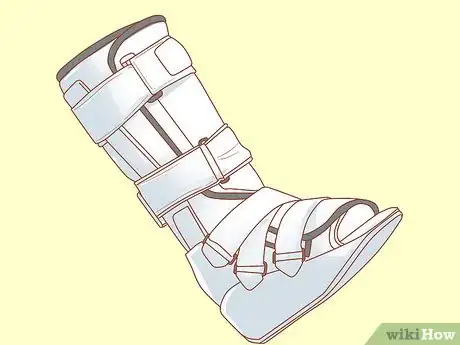
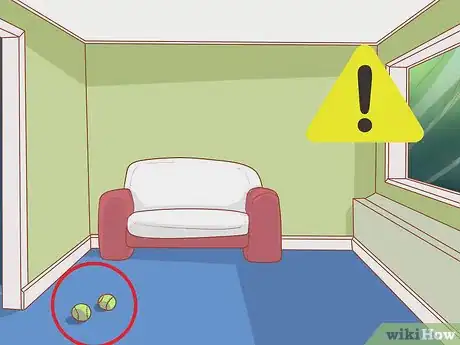
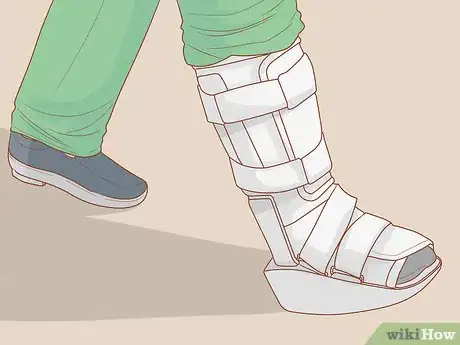
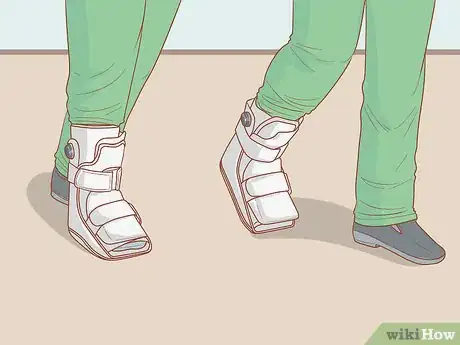
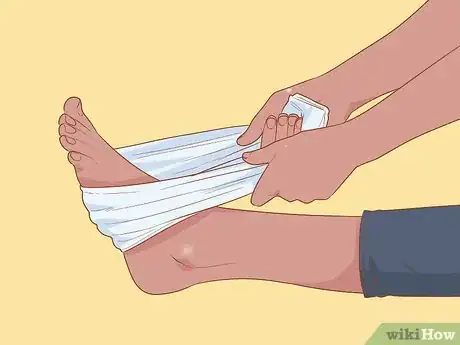
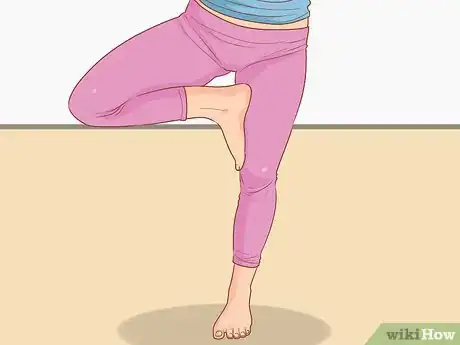

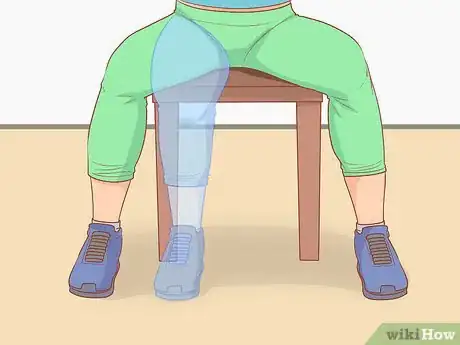

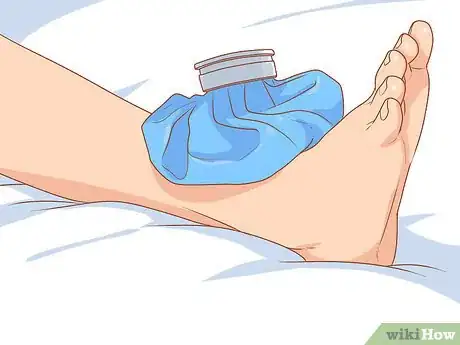
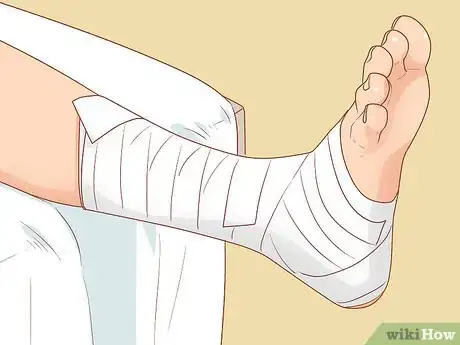







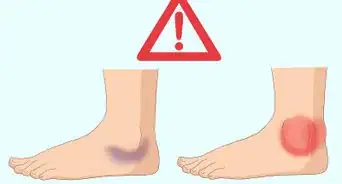



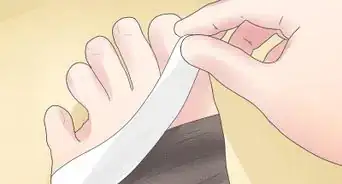
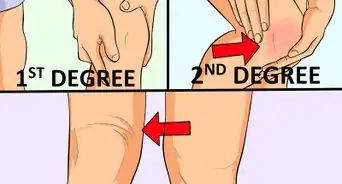








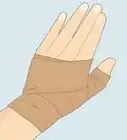






































Medical Disclaimer
The content of this article is not intended to be a substitute for professional medical advice, examination, diagnosis, or treatment. You should always contact your doctor or other qualified healthcare professional before starting, changing, or stopping any kind of health treatment.
Read More...